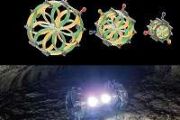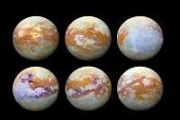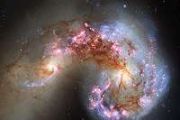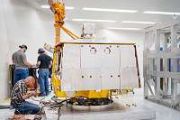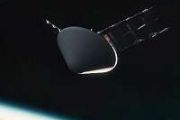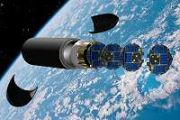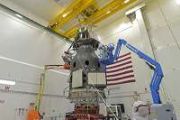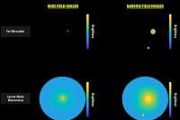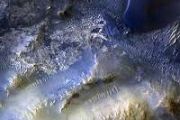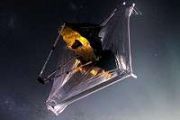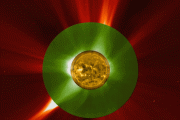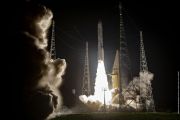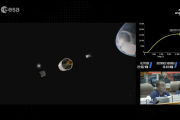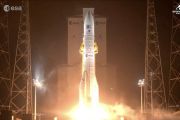
Copernical Team
NASA to evaluate dual strategies for bringing Mars samples back to Earth
 NASA has unveiled a revised strategy for its Mars Sample Return Program, introducing a dual approach to increase the likelihood of successfully delivering Martian rock and sediment samples to Earth. This initiative will simultaneously develop two landing architectures during the program's formulation phase, fostering competition and innovation while aiming for cost efficiency and adherence to sc
NASA has unveiled a revised strategy for its Mars Sample Return Program, introducing a dual approach to increase the likelihood of successfully delivering Martian rock and sediment samples to Earth. This initiative will simultaneously develop two landing architectures during the program's formulation phase, fostering competition and innovation while aiming for cost efficiency and adherence to sc Westinghouse Awarded NASA DOE Contract for Space Microreactor Development
 Westinghouse Electric Company announced that it has been selected by NASA, in collaboration with the U.S. Department of Energy (DOE), to advance its space microreactor concept through the Fission Surface Power (FSP) project. The contract, awarded by Idaho National Laboratory (INL), continues Westinghouse's Phase 1 work, focusing on optimizing system designs and initiating critical technology tes
Westinghouse Electric Company announced that it has been selected by NASA, in collaboration with the U.S. Department of Energy (DOE), to advance its space microreactor concept through the Fission Surface Power (FSP) project. The contract, awarded by Idaho National Laboratory (INL), continues Westinghouse's Phase 1 work, focusing on optimizing system designs and initiating critical technology tes Starfighters Accelerates Efforts in Space Launch Development
 Starfighters Space, Inc. has marked a major milestone in its space launch program with the development and production of Star Launch I test articles in collaboration with Innoveering, LLC, a subsidiary of GE Aerospace.
"Partnering with Innoveering brings the expertise we need to deliver on our vision for reliable, cost-effective launch vehicles," said Rick Svetkoff, CEO of Starfighters. "T
Starfighters Space, Inc. has marked a major milestone in its space launch program with the development and production of Star Launch I test articles in collaboration with Innoveering, LLC, a subsidiary of GE Aerospace.
"Partnering with Innoveering brings the expertise we need to deliver on our vision for reliable, cost-effective launch vehicles," said Rick Svetkoff, CEO of Starfighters. "T Achieving High Precision for In-Orbit Instrument Calibration
 One of the most complex challenges in space-based remote sensing is attaining the high level of instrument calibration accuracy required while in orbit. The Moon, as an exoatmospheric calibration source, presents a promising solution. However, its current status as an absolute reference has accuracy limitations of 5-10%, which falls short of the rigorous requirements for Earth science observatio
One of the most complex challenges in space-based remote sensing is attaining the high level of instrument calibration accuracy required while in orbit. The Moon, as an exoatmospheric calibration source, presents a promising solution. However, its current status as an absolute reference has accuracy limitations of 5-10%, which falls short of the rigorous requirements for Earth science observatio Blue Origin's first orbital launch now targeting Sunday
This request seems a bit unusual, so we need to confirm that you're human. Please press and hold the button until it turns completely green. Thank you for your cooperation!
Press and hold the button
If you believe this is an error, please contact our support team.
185.132.36.159 : c871acc2-69b0-4fa7-868e-fdbcd185
Spacecraft buzzes Mercury's north pole and beams back stunning photos
This request seems a bit unusual, so we need to confirm that you're human. Please press and hold the button until it turns completely green. Thank you for your cooperation!
Press and hold the button
If you believe this is an error, please contact our support team.
185.132.36.159 : e9a897c6-6ca0-4c95-a632-55c82fdf
How to deploy and talk to LEAVES on Venus
This request seems a bit unusual, so we need to confirm that you're human. Please press and hold the button until it turns completely green. Thank you for your cooperation!
Press and hold the button
If you believe this is an error, please contact our support team.
185.132.36.159 : bf99b9dc-82d5-436c-8f8f-53ece988
Space Launch System could launch a Titan balloon mission
This request seems a bit unusual, so we need to confirm that you're human. Please press and hold the button until it turns completely green. Thank you for your cooperation!
Press and hold the button
If you believe this is an error, please contact our support team.
185.132.36.159 : 40a59da5-e4b8-4936-b44c-616c024d
SpaceX sends up 1st Kennedy Space Center launch of the year
This request seems a bit unusual, so we need to confirm that you're human. Please press and hold the button until it turns completely green. Thank you for your cooperation!
Press and hold the button
If you believe this is an error, please contact our support team.
185.132.36.159 : f9cbd9ec-a722-4665-90ac-8e69d920
Discovering hidden wrinkles in spacecraft membranes with a single camera
This request seems a bit unusual, so we need to confirm that you're human. Please press and hold the button until it turns completely green. Thank you for your cooperation!
Press and hold the button
If you believe this is an error, please contact our support team.
185.132.36.159 : b48a90c9-443c-4d78-8f34-c9910ba9


